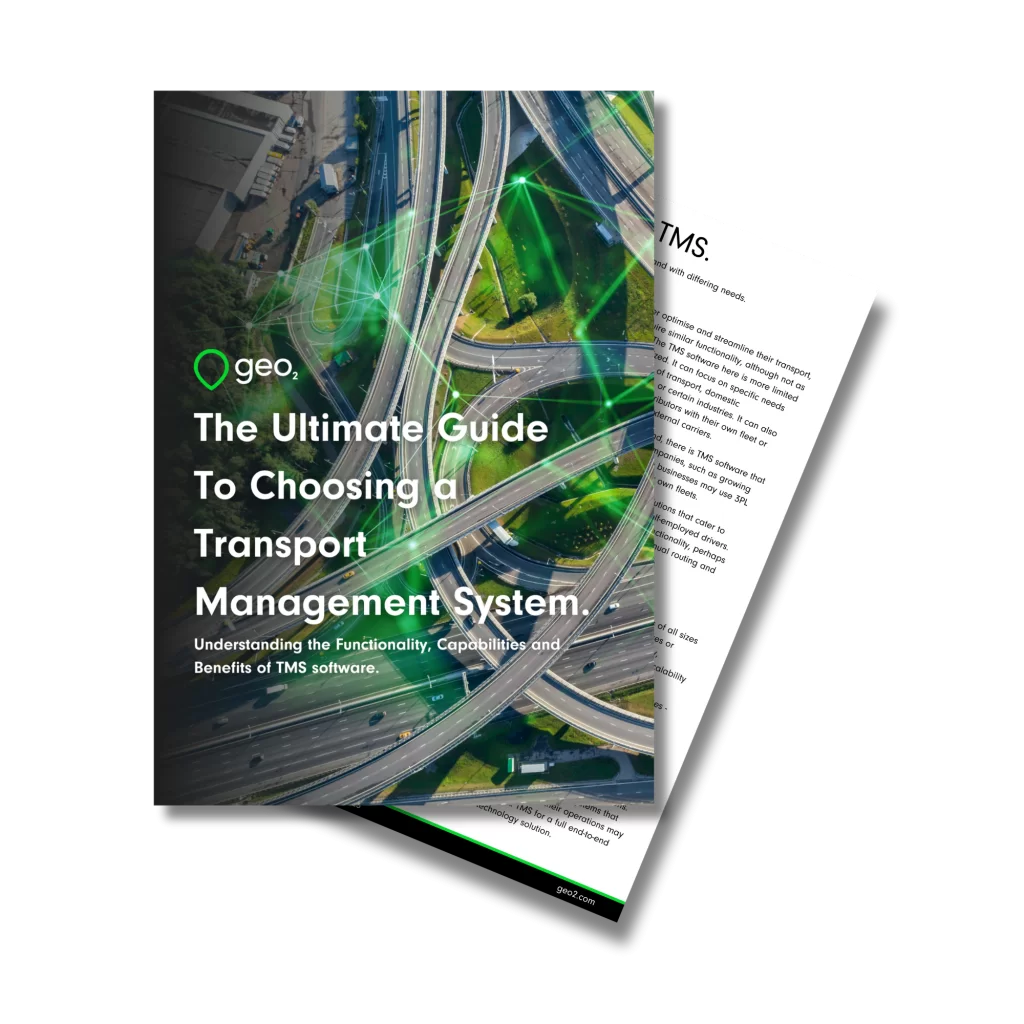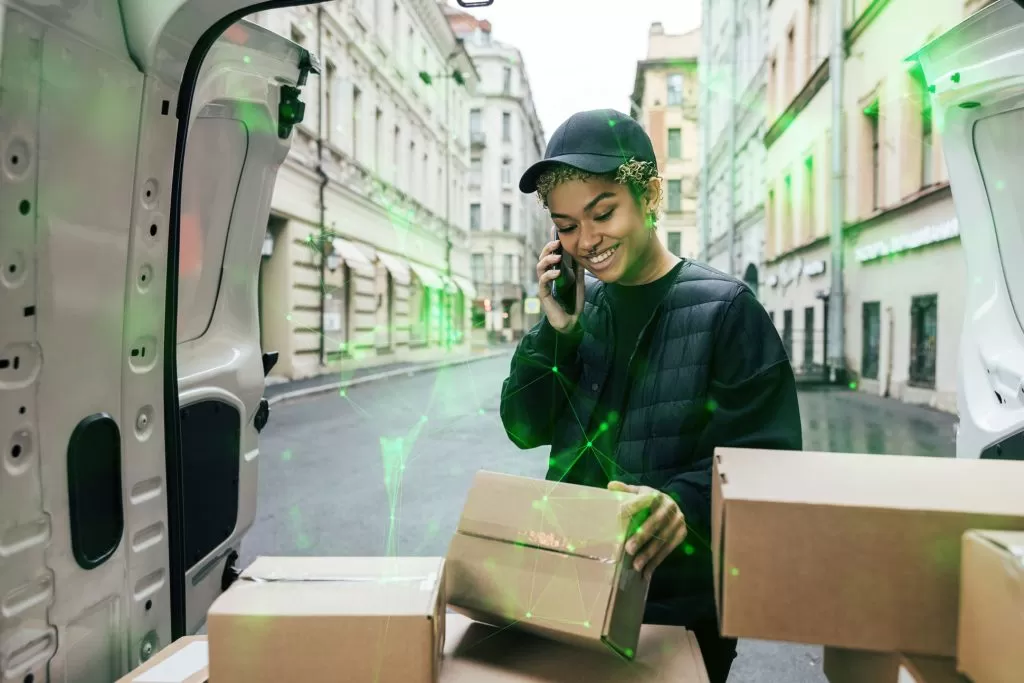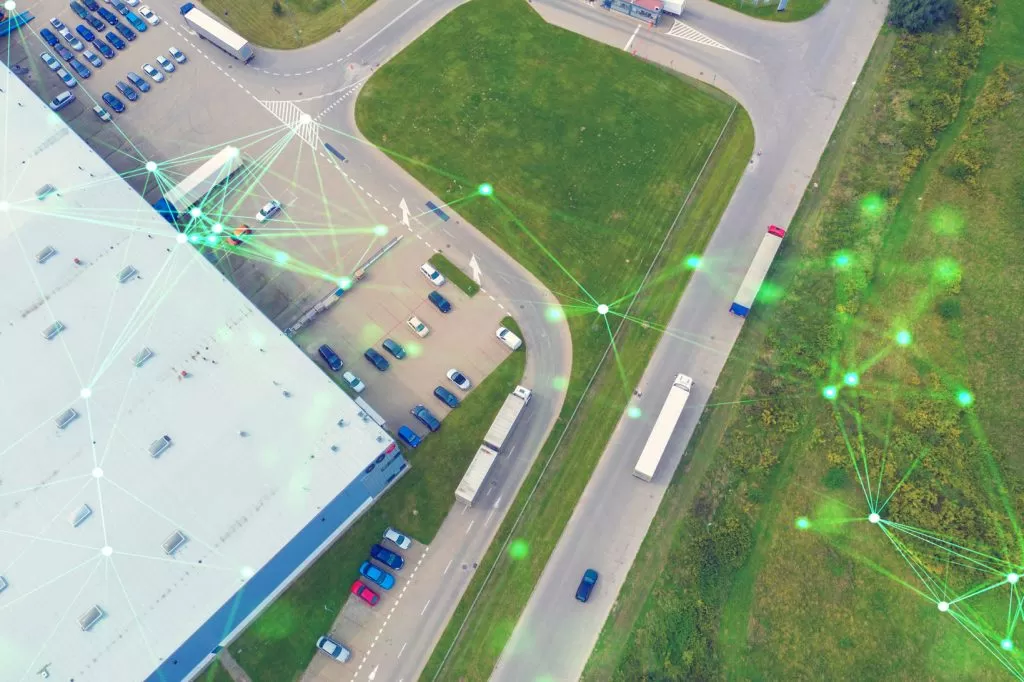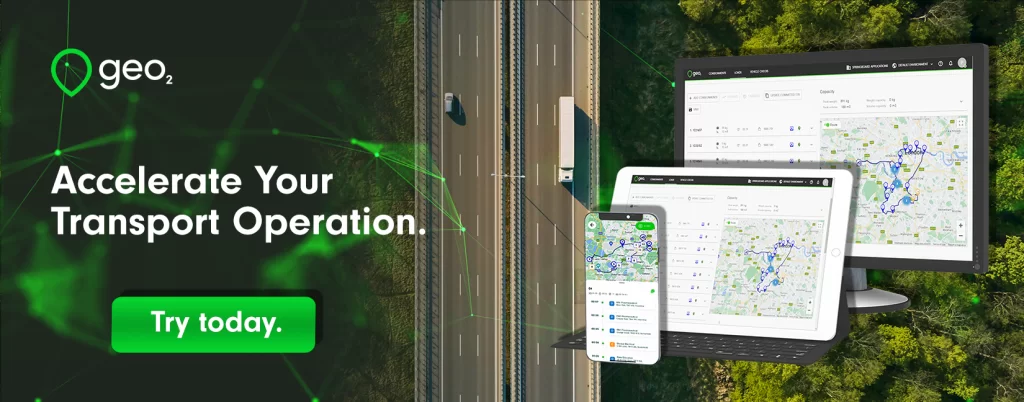
Own Fleet or Carriers: Which is Best for Your Business?
Introduction.
In logistics and supply chain management, deciding whether to own a fleet or use carriers is a crucial choice. This choice can have significant implications for everything from cost efficiency to customer satisfaction. In this blog post, we’ll explore the pros and cons of each option to help you determine the best choice for your business.
Need help choosing a TMS?
Download the Free Guide Now.

Table of Contents.
The Case for Owning a Fleet.
Definition and Benefits of Owning a Fleet.
Owning a fleet means that your business owns and operates its vehicles for transportation needs. This approach offers several benefits:
- Control over Schedules: Owning your fleet gives you full control over delivery times. This makes it easier to plan efficient routes and reliably meet deadlines.
- Branding Opportunities: Your vehicles can serve as moving billboards, increasing brand visibility and recognition.
- Long-term Cost Considerations: Although it costs more at first, having your own fleet can save money over time. It can reduce carrier fees, making better use of assets.
Advantages of Owning a Fleet.
Enhanced Control:
- Direct oversight of the delivery process ensures consistency and quality.
- Easier to implement and monitor compliance with company policies and regulations.
Branding:
- You can customize your own fleet vehicles with company logos and colors. This reinforces brand identity during every trip.
- Creates a professional image and trust among customers.
Cost Efficiency:
- Avoid recurring carrier fees by making a one-time investment in vehicles.
- Potential for higher return on investment (ROI) through efficient route planning and vehicle utilization.
Examples of Businesses with Owned Fleets.

The Case for Using Carriers.
Definition and Benefits of Using Carriers.
Using carriers involves outsourcing your transportation needs to third-party logistics providers. It refers to companies or entities that offer transportation services, capable of adjusting their services and equipment based on demand.
- Flexibility: Carriers provide a broad range of equipment and can adjust their services according to demand.
- Reduced Liability: Outsourcing lowers your risk and responsibility for vehicle maintenance, insurance, and driver management.
- Cost Savings: Eliminates the need for capital investment in vehicles and reduces ongoing operational costs.
Advantages of Using Carriers.
Operational Flexibility:
- Easily scale operations based on seasonal demand or growth.
- Access to specialized equipment without owning it.
Reduced Liability:
- Carriers handle vehicle maintenance, licensing, and insurance.
- Lowers risk associated with accidents and breakdowns.
Cost Savings:
- Avoid significant upfront costs and ongoing expenses related to fleet management.
- Pay only for the services you use, improving cash flow.
Examples of Businesses Using Carriers.
Walmart leverages carrier services to complement its owned fleet, ensuring flexibility and cost-effectiveness.
Procter & Gamble uses third-party carriers to manage its vast distribution network efficiently.

Table of Contents.
Challenges and Pitfalls of Each Approach.
Owning a Fleet.
High Initial Investment:
- Significant capital outlay required for purchasing vehicles.
- Ongoing costs include maintenance, fuel, and driver salaries.
Maintenance and Management:
- Requires dedicated resources for vehicle maintenance and management.
- Complex logistics involved in route planning and compliance with regulations.
Driver Shortages:
- Industry-wide driver shortages can impact service reliability.
- Recruiting and retaining skilled drivers can be challenging.
Using Carriers.
Less Control:
- Limited influence over delivery schedules and processes.
- Dependence on carrier performance and reliability.
Potential for Higher Costs:
- Carrier fees can increase, particularly during busy seasons.
- Additional costs for premium services and expedited deliveries.
Capacity Issues:
- Carriers may face capacity constraints during high demand periods.
- Limited availability of specialized equipment when needed.
Evaluating the Best Approach for Your Business.
Factors to Consider.
Business Size:
- Smaller businesses may benefit from the flexibility of carriers.
- Larger enterprises might find owning a fleet more cost-effective long-term.
Industry:
- Industries with specific transportation needs (e.g., perishable goods) may require dedicated fleets.
- General goods industries can leverage carrier flexibility.
Geographic Reach:
- Regional businesses can efficiently manage owned fleets.
- National or global operations might benefit from carrier networks.
Long-term Goals:
- Consider your growth plans and scalability needs.
- Evaluate the potential for future cost savings and operational efficiency.

Steps in the Decision-Making Process.
Cost-Benefit Analysis:
- Compare the costs of owning a fleet versus using carriers.
- Factor in both upfront investments and ongoing expenses.
Market Research:
- Analyze industry trends and best practices.
- Assess competitor strategies and outcomes.
Forecasting:
- Predict future demand and transportation needs.
- Evaluate the scalability of each option.
Conclusion.
In the debate between owning a fleet and using carriers, there’s no one-size-fits-all answer. Each approach has its own set of advantages and challenges. In fact, to achieve operational excellence, using a combination of both own fleet and carriers leads to cost reductions and increased efficiency.
Logistics managers, fleet operators, and supply chain professionals can make informed decisions by carefully evaluating factors. These include business size, industry, geographic reach, and long-term goals, ensuring decisions align with their specific needs
If you are using your own fleet, then Geo2 Transport Management System can help you optimise your own fleet operation. Book a free consultation to find out more, or try a 14 day free trial today to get started.






